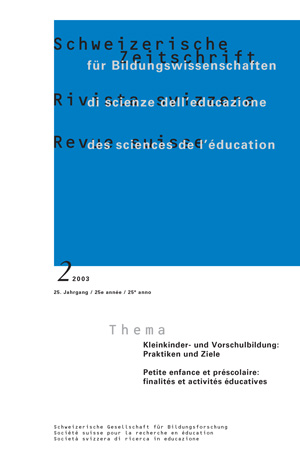Principles and objectives of the new «scuola dell’infanzia» (childhood school) in the swiss canton of Tessin
DOI:
https://doi.org/10.24452/sjer.25.2.4661Abstract
In the Italian speaking canton of Tessin there has been a wide range of pedagogical methods used in pre-school education. Among those are: the «Asilo infantile», «kindergarten», the «Casa dei bambini montessoriana» and the «Scuola materna» models. In the last decade a further and newly defined model has been developed. It is called the «scuola dell’infanzia» or «Childhood school» which has been adopted in the official «Orientamenti prommatici» or «Education Program Guidelines» for the year 2000.
The new model aims to combine and harmonise the most outstanding characteristics of the past models into an education process adequately designed to deal with the child’s needs inside the “Scuola dell’infanzia”. It takes into account the child’s verbal and non verbal com-munication, their emotional and affective life, their behaviour and cognitive sphere.
The current work describes, through key questions, the steps taken and the reasons which lead to the current «Scuola dell’infanzia». A description of the strengths and a critical view of the still pending challenges is also reported to show where potential improvements are needed. Furthermore a specific list of observation points is given to describe how the school sees its capability to deal with many challenges. Among these challenges are the child’s needs including social needs, the ability of the teaching staff to be at the same wavelength as their educational tasks and the continuity of the education system between the «scuola dell’infanzia» and the Elementary school along with the specific pedagogical tools.
Downloads
Downloads
Published
Issue
Section
License

This work is licensed under a Creative Commons Attribution 4.0 International License.



